2019年11月28日,航空学院青年学术论坛暨流体力学智能化研讨会在航空楼A310会议室顺利召开。本次研讨会以“流体力学智能化”为主题,探讨人工智能化方法在流体力学中的应用,交流当前的研究进展,启发创新。研讨会受到西北工业大学流体力学智能化国际联合研究所、“飞行器复杂流动与控制学科创新引智基地”资助。香港理工大学唐辉副教授,代尔夫特理工大学Richard P. Dwight副教授,西北工业大学、西安交通大学,西安电子科技大学相关代表受邀参加论坛并做主题报告。研讨会由张伟伟教授、李春娜副教授、西安交通大学陈刚教授主持。
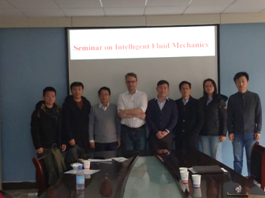
图1 嘉宾合影留念
首先,张伟伟老师代表学校对唐辉老师一行人的到来表示热烈欢迎,并向师生简单介绍了唐辉副教授、Richard教授的个人简介。主题报告中,唐辉老师介绍了机器学习在主动流动控制中的一些最新应用,包括用于涡激振动控制的遗传编程方法,用于消除速度亏损和寻找最佳减阻策略的深度强化学习方法。通过这些基于机器学习的主动流动控制研究,发现了一些新的和出乎意料的控制策略。
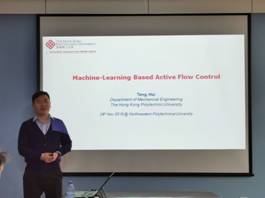
图2 唐辉副教授报告
Richard教授对机器学习在湍流建模领域进行了概述,并展示了他们在该领域的工作以及一些观察结果和关键结论。最后讨论了如何将这些方法应用于外形优化和风电场尾流建模中。
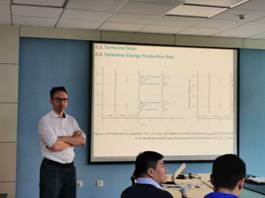
图3 Richard副教授报告
张伟伟教授对唐辉副教授和Richard教授的报告进行了感谢,并介绍了西工大在流固耦合领域的研究团队及各自的研究特色。张伟伟教授从课题组的研究对象出发,介绍了课题组近年来围绕流固耦合问题与流体力学智能化问题进行的研究工作,并与唐辉副教授和Richard副教授进行了深入的交流。
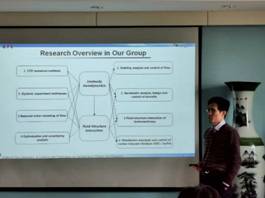
图4张伟伟教授报告
随后,西安电子科技大学邬晓敬博士做题为“A New Evolutionary Optimization Framework Based on Model Prediction for Aerodynamic Design”的报告,西安交通大学博士生韩仁坤做题为“A Novel Spatial-Temporal Prediction Method for Unsteady Wake Flows Based on Hybrid Deep Neural Network”的报告,航空学院博士生朱林阳、王旭、任凯也分别就自己近期的相关工作进行了汇报,唐辉副教授和Richard副教授对各位青年研究者的工作进行了肯定,并提出了一些中肯的建议,最后研讨会在愉快的交流中结束。(撰稿:高传强,审核:张伟伟)
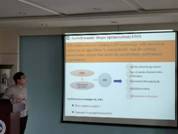
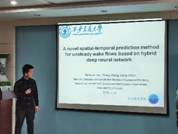
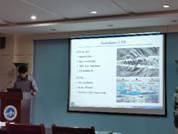


图5青年研究者报告
各汇报人的汇报题目如下:
Speaker |
Topic &Abstract |
Hui Tang |
Machine-Learning Based Active Flow Control In this talk, some recent applications of machine learning (ML) in active flow control (AFC) will be introduced. Here the term AFC means that the control is realized by injecting a small amount of energy into existing flow systems. These applications contain generic-programming (GP) method in vortex-induced vibration (VIV) control, deep reinforcement learning (DRL) for eliminating the velocity deficit, and DRL for finding best drag reduction strategies. Through these ML based AFC studies, some new and unexpected control strategies have been revealed. |
Richard P. Dwight |
Machine-Learning for Turbulence Modeling Several groups worldwide are investigating numerical and statistical methods for deriving turbulence models directly from this data-corpus - efforts which generally involve some form of machine-learning. We will give an overview of this nascent field, and the key results and observations obtained so far. We discuss our own work in the area, and finally application of our techniques to shape-optimization and to wind-farm wake modelling. |
Weiwei Zhang |
Group Research Introduction: Aerodynamics and Fluid-Structure Interaction |
Xiaojing Wu |
A New Evolutionary Optimization Framework Based on Model Prediction for Aerodynamic Design |
Renkun Han |
A Novel Spatial-Temporal Prediction Method for Unsteady Wake Flows Based on Hybrid Deep Neural Network |
Linyang Zhu |
Study on High Reynolds Number Turbulence Modeling Based on Machine Learning methods |
Xu Wang |
Airfoil Dynamic Stall Aerodynamic Prediction Method Based on Data Fusion Model |
Kai Ren |
Adaptive Control of The Transonic Buffet Flow |
